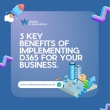As you navigate the data-driven landscape of 2025, you’ll find that streamlining your reporting process is no longer optional—it’s essential for staying competitive. With a plethora of automated tools at your fingertips, you’re poised to transform how you handle data and make decisions. From real-time analytics to AI-driven insights, these innovations promise to revolutionize your workflow. But which tools will truly make a difference in your organization? The answer lies in understanding not just the capabilities of each solution, but how they align with your specific needs and future goals. Let’s explore the top contenders that could redefine your reporting strategy.
Understanding Automated Reporting Tools
Automated reporting tools have revolutionized the way businesses handle data. These powerful solutions streamline data collection and presentation by integrating with various sources to generate reports and dashboards automatically. You’ll find that they greatly reduce manual data entry, enhancing accuracy and efficiency in your reporting processes.
Additionally, leveraging these tools can empower organizations to make informed decisions by providing data-driven insights that support strategic decision-making.
When considering a reporting automation tool, you’ll encounter several types, including self-service, enterprise, specialized, hybrid, and cloud-based options. Each caters to different organizational needs and sizes, allowing you to choose the best fit for your company.
The key benefits you’ll experience include expedited reporting processes and customizable dashboards based on specific parameters and KPIs.
It’s important to note that automated reporting tools differ from business intelligence tools. While the former focuses on compiling structured reports, BI tools analyze and visualize data across multiple systems for actionable insights.
As you look to the future, expect increased integration of AI and machine learning in these tools.
Key Benefits of Report Automation
Businesses can reap substantial rewards by diving into report automation. By implementing automated reporting tools, you’ll markedly reduce the time spent on manual data entry. This shift can save hours each week, boosting overall productivity and allowing for deeper insights into your operations.
Additionally, advanced AI integration can enhance the effectiveness of your reporting process.
One of the most vital benefits of report automation is its ability to minimize human error. By automating data collection and reporting processes, you’ll enhance the accuracy of your reports, leading to more reliable decision-making.
Additionally, these tools provide real-time data on key performance indicators, enabling you to react swiftly to emerging trends.
Customizable reporting templates streamline the creation of tailored reports, improving consistency and reducing effort. With features like scheduled report generation, you’ll guarantee timely distribution of insights to stakeholders, enhancing accountability across your organization.
This automated approach not only saves time but also improves strategic alignment.
Choosing the Right Automation Tool
To make the best choice, you’ll need to assess your specific reporting needs and desired functionalities. This evaluation guarantees that the tool you select aligns with your business objectives and enhances your reporting process.
Consider leveraging insights from Business Intelligence Reporting to better understand how automation can streamline your data management.
When considering automation tools, prioritize integration capabilities with your existing systems. Seamless data flow from various data sources is essential for accurate and timely reporting.
Additionally, focus on user-friendliness and customization options. Intuitive interfaces and tailored features can greatly boost user engagement and efficiency in your reporting workflow.
Don’t overlook scalability when choosing a tool. As your organization grows, your reporting needs will likely become more complex. Select a solution that can adapt to increasing data volumes and evolving requirements.
Google Analytics for Real-Time Insights
While many reporting tools offer valuable insights, Google Analytics stands out for its real-time capabilities. As a powerful platform for analytics and reporting, it provides businesses with immediate data on user activity, allowing you to monitor engagement and conversions as they happen.
This real-time feature is essential for making quick, informed decisions in the current fast-paced digital landscape.
Google Analytics integrates seamlessly with various marketing platforms, enabling you to create customizable dashboards for data visualization. You can set up real-time alerts for specific metrics, ensuring you’re always aware of significant changes in traffic or user behavior.
The platform’s advanced segmentation capabilities allow you to analyze specific user groups based on their real-time actions and demographics, providing deeper insights into your audience.
With a 4.5/5 star rating on G2Crowd, Google Analytics is recognized for its effectiveness in delivering actionable insights that drive marketing strategy and improve website performance.
Looker Studio’s Interactive Dashboards
Looker Studio takes data visualization to the next level with its interactive dashboards. This powerful automation software, formerly known as Google Data Studio, enables you to create dynamic reports that bring your data to life.
You’ll appreciate the user-friendly drag-and-drop interface, which makes it easy to integrate various data sources, including Google Analytics and Google Sheets.
With Looker Studio, you can craft customizable reports tailored to your specific business needs. The platform’s flexibility allows you to showcase key metrics and KPIs effectively, ensuring that your stakeholders have access to the most relevant information.
The interactive features, such as filter controls and clickable elements, enhance engagement by allowing users to explore data dynamically.
Rated highly by users, Looker Studio excels at transforming complex data into comprehensible visual formats. This capability drives informed decision-making processes across your organization.
Whether you’re a data expert or a novice, you’ll find Looker Studio’s interactive dashboards to be an invaluable tool for creating real-time visualizations and reports that communicate your data’s story clearly and effectively.
SolveXia’s Financial Reporting Capabilities
Every finance team knows the pain of manual reporting processes. That’s where SolveXia comes in, offering a powerful automated reporting software solution that streamlines financial reporting tasks. With its ability to integrate data from multiple sources, SolveXia automates the process of data aggregation, guaranteeing accuracy and up-to-date financial insights.
One of SolveXia’s standout features is its customizable reporting templates, which allow you to tailor reports to specific financial metrics and KPIs. This flexibility guarantees that the generated reports are relevant and meaningful to your organization’s needs.
The platform’s scheduled report generation capability further enhances efficiency by automatically distributing financial insights to stakeholders without manual intervention.
SolveXia’s automation prowess extends beyond just report creation. It greatly reduces time spent on manual data entry and calculations, freeing up your finance team to focus on strategic tasks.
With a stellar 4.7/5 star rating for efficiency, SolveXia has proven its ability to streamline complex financial workflows and improve overall reporting accuracy. By implementing SolveXia, you’ll transform your financial reporting processes, making them more efficient, accurate, and timely.
Power BI’s Cloud Integration Features
Power BI takes cloud integration to the next level, offering robust features that complement its reporting capabilities. As one of the leading automated reporting tools, it seamlessly integrates with Microsoft Azure, allowing you to access and analyze data from various cloud sources in real-time. This integration is essential for businesses looking to streamline their data analysis and reporting processes.
With support for over 100 data connectors, you can easily integrate data from popular platforms like Salesforce and Google Analytics, creating thorough reports that provide a holistic view of your business.
Power BI’s cloud features include automatic data refreshes, ensuring your reports always reflect the most current information without manual intervention. The platform’s shared workspaces facilitate collaboration, enabling your team to work together on reports and dashboards from anywhere.
Additionally, Power BI’s cloud capabilities leverage advanced analytics and AI-driven insights, enhancing your data visualization and decision-making processes. By utilizing these powerful cloud integration features, you’ll be able to make more informed, data-driven decisions and stay ahead in the current competitive business landscape.
Tableau’s AI-Driven Data Analysis
Tableau’s AI-driven data analysis capabilities are revolutionizing the way businesses interpret and utilize their data. By leveraging artificial intelligence, Tableau automates data preparation processes, allowing you to focus on deriving insights rather than managing data. This streamlined approach considerably enhances your ability to generate automated reports and conduct in-depth data analysis.
One of Tableau’s standout features is Explain Data, which provides automatic insights and visualizations. This tool enables you to quickly identify trends and anomalies within your datasets, improving the efficiency of your business intelligence efforts.
In addition, Tableau’s predictive analytics capabilities utilize machine learning algorithms to forecast future trends, empowering you to make data-driven decisions with confidence.
The platform’s integration of natural language processing makes data analysis more accessible, even for non-technical users. You can simply ask questions in plain language and receive relevant visualizations and insights.
Moreover, Tableau’s support for real-time data connections guarantees that your analyses and reports always reflect the most current information available, enhancing the accuracy and relevance of your business intelligence initiatives.
Domo’s Real-Time Data Integration
Domo’s real-time data integration capabilities offer a game-changing solution for businesses seeking to streamline their reporting processes. By connecting to over 1,000 data sources, Domo enables you to consolidate information seamlessly, providing instant access to critical insights.
The platform’s automated data refreshes guarantee you’re always working with the most up-to-date information, enhancing the accuracy of your reporting and decision-making.
One of Domo’s standout features is its customizable dashboards, which allow you to visualize data and track key performance indicators at a glance. This visual approach enhances understanding and helps you quickly identify trends and patterns.
The cloud-based architecture guarantees scalability, accommodating organizations of all sizes without compromising performance as data volumes grow.
Domo’s real-time alerts and notifications keep you informed about significant changes in your data, enabling timely responses to emerging trends and issues. This proactive approach to data management can give your business a competitive edge.
Future Trends in Reporting Automation
As we look to the future of reporting automation, several exciting trends are poised to revolutionize how businesses handle data.
Artificial intelligence and machine learning integration will enhance predictive analytics, enabling you to forecast trends and make data-driven decisions more effectively. You’ll see a shift towards real-time reporting, allowing your business to respond quickly to market changes and operational challenges.
The rise of self-service reporting tools will empower non-technical users in your organization to generate custom reports, reducing dependency on IT departments.
This democratization of data analysis will streamline your business processes and improve overall efficiency. Advanced data visualization techniques will make complex information more comprehensible, ensuring that stakeholders at all levels can make informed decisions.
As data security concerns grow, future reporting automation tools will prioritize robust security features.
You’ll be able to protect sensitive information while still maintaining efficient reporting capabilities. These trends will collectively transform how you approach reporting, making it more accessible, insightful, and secure.























